| IESL PROVINCIAL CENTRES’ RESURGENCE – Tributes to Chairmen |
| |
|
The Institution of Engineers, Sri Lanka (IESL) is the apex body for the engineering profession in the country. Today it meets the professional needs of its 13000 strong membership in all corners of Sri Lanka through provincial centres, district centres and student chapters in universities of Moratuwa, Peradeniya, Ruhuna, South East and the Open University of Sri Lanka. It also has an overseas chapter in New South Wales Australia. Established in 1906, it’s one of the oldest professional bodies in Sri Lanka. With the focus of the country’s development efforts shifting to the provinces from the late 1970’s, IESL Provincial Centres were begun to be set up to meet the professional needs of members located in the provinces. Today there are IESL Provincial Centres in all the provinces except the western province where its head office is located. Until end of last year the activities of these centres mainly focused on arranging programs for professional development of members in the provinces, engage in membership drives and collection of annual subscription from members, all with the close assistance of the IESL Secretariat in Colombo and dependant on the vagaries of effectiveness of the communication between them. The provincial centres didn’t have permanent places for operation and functioned within their limited capacities through borrowed facilities. Members aspiring for the Charter however had to travel all the way to Colombo to sit for the Professional Review lectures and exams. Though internet made its advent in the later years, access to its applications such as emails and browsing the World Wide Web were often difficult due to poor infrastructure in the provinces. Also members often found it difficult to travel from home districts to the main district in which provincial centres are located. Time and distance barriers thus hindered member participation in IESL activities. The need for greater connectivity between the IESL and its members was indeed very strong.
|
| |
| |
| The scenario began to change |
|
The scenario began to change from the beginning of this year in the 2012 / 2013 session of the IESL. Under the presidency of Eng. Tilak De Silva, a telecommunication engineer, the parent body of the IESL went on a crash program to establish connectivity with its entire membership. Eng. Arjuna Manamperi, a very much ICT savvy member domiciled in the USA took over the reins as Chairman of a special ICT Committee set up by the IESL Council for the purpose. There was no looking back thereafter. The ICT revolution in the world over was brought in full force to the business processes of the IESL and necessary human resources oriented to meet the challenges of the future. Capacity building in the head office secretariat and provincial centres went hand in hand to tackle the problem. The Executive Committees of IESL Provincial Centres under the leadership of unique personalities who happened to be chairmen in those centres went on full alert to make possible the dream to make IESL accessible to each and every member. Besides routine activities, the centres focused on acquiring land to have a permanent building, establishment of affiliated district centres where feasible and staff and member orientation towards the new membership management system that was introduced. In advance demonstrations of enthusiasm and capability towards proposed takeover of some the functions of the Secretariat in an ICT enabled environment the provincial centres conducted the first ever ‘B’ Paper examinations, to be held in the provinces, facilitated ICT enabled group activities such as meetings and seminars through live streaming and Skype technologies in virtual participation with the head office, other provincial centres and overseas chapter and proactively engaged in getting sponsorships for funding some of their capacity building efforts.
|
| |
| Permanent places of their own |
|
Expanded potential of provincial certres for group activities made it necessary to have permanent places of their own to effectively carry out their enhanced roles. To date North Central Provincial Centre and Eastern Provincial Centre have acquired necessary land through respective government bodies and laid the foundation stones for their proposed buildings. The Northern Provincial Centre too has acquired the necessary land in Kilinochchi. Notwithstanding the establishment of permanent buildings for provincial centres the need to make IESL services accessible to each and every member is a prime necessity. Thus the idea of establishing IESL District Centres has been mooted for district with significant concentration of members and where there is difficulty of travel to Provincial Centres. Todate IESL District Centres have been established in Kegalle (9/03/2013), Polnnaruwa (14/08/2013) ,Mannar (13/09/2013), Ampara (15/09/2013), Batticaloa (15/09/2013) and Monaragala districts under their respective Provincial Centres. The role of the Executive Committees of Provincial Centres led by their respective Chairmen in expanding the sphere of IESL’s connectivity with its members have thus been very significant. This article is in tribute to their dedication and contribution to the process.
|
| |
| Tribute to your dedication and contribution... |
| |
|
|
|
|
 |
|
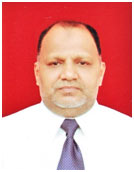 |
|
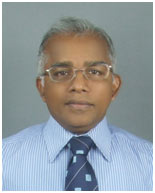 |
Eng.N. Suthakaran
Chairman- Northern Provincial Centre |
|
Eng. A.L.M Nizar
Chairman- Eastern Provincial Centre |
|
Eng. Anil Ranjith
Chairman- Southern Provincial Centre |
| |
|
|
|
|
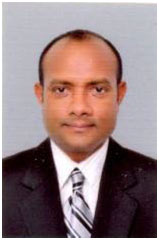 |
|
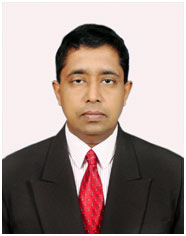 |
|
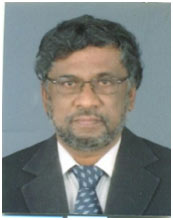 |
Eng. J.A.D.R Sujith Kumara
Chairman- North Central Provincial Centre |
|
Eng. Ajith Abeysuriya
Chairman- Sabaragamuwa Provincial Centre |
|
Eng. K.M Kumaratunga
Chairman- Central Provincial Centre |
| |
|
|
|
|
 |
|
 |
|
|
Eng. Prasadh Ratnayake
Chairman- Wayamba Provincial Centre |
|
Eng. S.N.B.M Padmasiri
Chairman- Uva Provincial Centre |
|
|
|
|